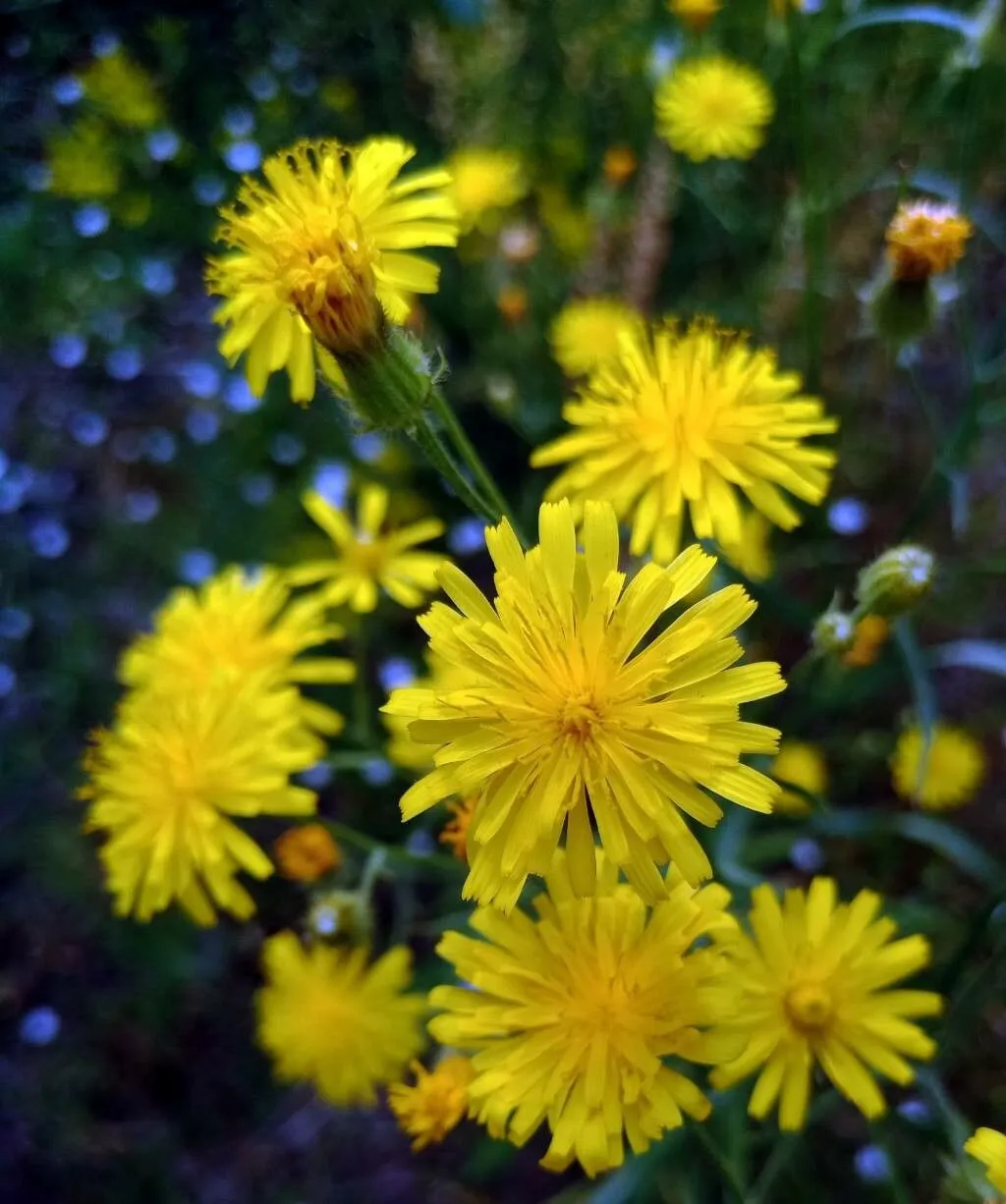
Author: L.
Bibliography: Sp. Pl.: 807 (1753)
Year: 1753
Status: accepted
Rank: species
Genus: Crepis
Vegetable: Unknown
Observations: Europe
Rough hawksbeard, also known by its scientific name Crepis biennis, is a fascinating plant native to Europe. First documented in the seminal botanical work “Species Plantarum” in 1753 by the esteemed botanist Carl Linnaeus, this species finds its place within the Asteraceae family, known for its diverse and widespread flowering plants.
Crepis biennis typically thrives in a variety of habitats, often flourishing in grasslands, meadows, and by the roadside. The plant is biennial, meaning it completes its life cycle over two years. In the first year, it forms a basal rosette of leaves, and in the second year, it sends up flowering stems that can reach notable heights.
The common name, Rough hawksbeard, comes from the texture of its foliage and the resemblance of its flowers to those of the hawksbeard genus. The plant is characterized by its bright yellow, dandelion-like flowers which are not only striking but also a crucial source of nectar for bees and other pollinators.
Throughout its life, Crepis biennis demonstrates a robust adaptability to its environment, making it a common, yet distinct component of Europe’s botanical landscape. Conservation of such native species is essential as they play integral roles in their ecosystems, supporting biodiversity and maintaining ecological balance.
In conclusion, the Rough hawksbeard is a notable species both for its ecological importance and its historical significance within botanical studies. Its enduring presence across Europe stands as a testament to nature’s resilience and diversity.
Dan: bjerg-blåøje, knop-siv, sibirisk iris, toårig høgeskæg
Swe: brokiris, gräslilja, knapptåg, skånefibbla, skånsk fibbla, strandiris
Fra: chicorée jaune, crépide bisannuelle, crépide des prés, crépis bisannuel, crépis des prés
Lav: daudzgadīgā cietpiene
Lit: dvimetė kreisvė
Est: kaheaastane koeratubakas
Fin: keräpäävihvilä, kuovinkukka, piennarkeltto, siperiankurjenmiekka
Nor: knappsev, sevlilja, sibir-iris, veghaukeskjegg
Pol: pępawa dwuletnia
Ita: radicchiella dei prati
Eng: rough hawk’s-beard, rough hawksbeard
Sqi: shmangë dyvjeçare
Deu: wiesen-pippau
Nld: groot streepzaad
Ces: škarda dvouletá
Ron: гэлбенуш биенал
Bul: двугодишна дрипавка
Cym: gwalchlys garw, gwalchlys garwaidd, gwalchlys garwaidd mwyaf, gwalchlys mwyaf
En: Rough hawksbeard
Be: Зубнік двухгадовы
Bg: Двугодишна дрипавка
Hr: Dvogodišnji dimak
Cs: Škarda dvouletá
Da: Toårig Høgeskæg
Nl: Groot streepzaad
Et: Kaheaastane koeratubakas
Fi: Piennarkeltto
Fr: Crépis des prés
De: Zweijähriger Pippau, Wiesen-Pippau
It: Radicchiella dei prati
Pl: Pępawa dwuletnia
Ru: Скерда двулетняя
Sk: Škarda dvojročná
Sv: Skånefibbla
Cy: Gwalchlys garw
Taken Apr 16, 2021 by Casado Quique (cc-by-sa)
Taken Jun 6, 2022 by Andrzej Pasierbinski (cc-by-sa)
Taken Jul 2, 2022 by Blue Bottle (cc-by-sa)
Taken Jul 2, 2022 by Blue Bottle (cc-by-sa)
Taken Aug 27, 2019 by anaxym (cc-by-sa)
Taken Oct 17, 2021 by Michael Andresek (cc-by-sa)
Taken Mar 12, 2021 by Tyhjä Luut (cc-by-sa)
Taken Aug 24, 2022 by Denisa Regine Novotná (cc-by-sa)
Taken Jul 15, 2022 by Sarah R. (cc-by-sa)
Taken Jun 6, 2022 by Andrzej Pasierbinski (cc-by-sa)
Taken Aug 1, 2021 by morti huarte (cc-by-sa)
Taken May 20, 2020 by Eliška Motisová (cc-by-sa)
Taken May 13, 2021 by SpontanVegetation (cc-by-sa)
Taken Oct 17, 2021 by Michael Andresek (cc-by-sa)
Taken Aug 27, 2019 by anaxym (cc-by-sa)
© copyright of the Board of Trustees of the Royal Botanic Gardens, Kew.
Taken Jun 16, 2022 by Werner Rom (cc-by-sa)
Taken Feb 26, 2021 by Karim BOUDANI (cc-by-sa)
Taken May 1, 2022 by Karim BOUDANI (cc-by-sa)
Taken May 22, 2020 by Reinier Feijen (cc-by-sa)
Taken Apr 28, 2022 by Ma Burg (cc-by-sa)
Taken Jun 27, 2021 by Werner Rom (cc-by-sa)
Taken Aug 9, 2020 by Z. Magda (cc-by-sa)
Taken Nov 21, 2021 by Georg Jurceka (cc-by-sa)
Taken Jul 16, 2022 by Rico Mende (cc-by-sa)
Taken May 6, 2022 by inga warm (cc-by-sa)
Taken May 13, 2021 by SpontanVegetation (cc-by-sa)
Family: Myrtaceae Author: (F.Muell.) K.D.Hill & L.A.S.Johnson Bibliography: Telopea 6: 402 (1995) Year: 1995 Status:…
Family: Rubiaceae Author: Pierre ex A.Froehner Bibliography: Notizbl. Bot. Gart. Berlin-Dahlem 1: 237 (1897) Year:…
Family: Sapindaceae Author: Koidz. Bibliography: J. Coll. Sci. Imp. Univ. Tokyo 32(1): 38 (1911) Year:…
Family: Asteraceae Author: A.Gray Bibliography: Pacif. Railr. Rep.: 107 (1857) Year: 1857 Status: accepted Rank:…
Family: Fabaceae Author: Medik. Bibliography: Vorles. Churpfälz. Phys.-Ökon. Ges. 2: 398 (1787) Year: 1787 Status:…
Family: Aspleniaceae Author: (Cav.) Alston Bibliography: Bull. Misc. Inform. Kew 1932: 309 (1932) Year: 1932…